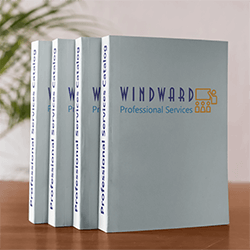This is a list of things to investigate if you experience a report not matching another report of the same reporting period.
Check Invoice Types in Report
Financial reports will include completed invoices types. You configure these Main types in the “Invoice Setup”. These invoice types post to the general ledger:
- “C”ash
- “L”ookup Cash
- “A”/R Invoices
- “B” - A/R with Back Orders
- “T”ransfer
- “S”ervice
- “F”inance
- “O”ut on RMA
- “U” In on RMA
- “P”aid Out
- “V”isa (Legacy)
- “M”astercard (Legacy)
- “I”nterest (Legacy)
Many sales reports have an option to include incomplete types such as “W”ork Orders, La“Y”aways or “E”stimates. If you are comparing a report that includes incompleted types against financial reports that exclude, this can explain the discrepancy. You can also forget to include completed invoice types which can explain a discrepancy.
- Best Practice: Review what types of invoice types you are including in a report if you intend to compare against a financial report.
- Example: Comparing the Financial Income and Expense report which only includes completed invoice types against the Main Category Sales Report that has options to include incompleted types.
Check Date Ranges
If you are running a financial report it will be run for an entire book month. When running many non-financial reports these are run by date range instead of a book month. Ensure you are not running for an incomplete date range and that all integrity has been checked before doing a comparison.
- Best Practice: Review dates and book months you are comparing against a report. Use the date selection tool when selecting a date by double-clicking. It will show you a calendar helping avoid missing the end of the month.
- Example: A leap year has a 29th day in February. Comparing a financial book month for February against a report run on a leap year reporting on Feb 1 - Feb 28th will not include the 29th day. Leap years only come around every 4 years so this can be easily missed.
Changing an Inventory Category
With supervisor privileges, a user with rights can change the category that an inventory item resides in. This will change where sales history will land in inventory reports but NOT change the income and cost of goods ledgers where past invoices have been posted to. Looking back on reports that look at these areas will have different results after such a change. Many times this change is made as it is the right thing for the sales team to keep inventory sales history with an item but forget to tell the financial stakeholders which run reports against these areas.
- Best Practice: Restrict who has supervisor privileges.
GL coded entry on Invoice
Using the feature to place a general ledger code directly onto an invoice makes accounting easy but has a sales report consequence. This value will be included in invoice sales reports but will not match the revenue for inventory sold detail reports as a GL code is not an inventory item.
- Best Practice Solution: Create a CATEGORY and INVENTORY item to sell and use that on an invoice instead. You can then use a journal entry to direct the income sold from the inventory item, into the correct general ledger for accounting.
Integrity
If you are not running integrity report this can have a ledger, invoice reports and detail reports not matching as it depends on the view of the data that a report totals against. If the integrity error is the invoice total does not match the detail. This can be why a summary report does not match the detail reporting
- Best Practice: Make a habit to run integrity reports regularly.
Changing Category Ledger Codes
With category security, an administrator can make changes to the category income and cost of goods sold ledger codes for a category. This would impact the “Main Category Income and Expense” and “Main Category Profitability” ledger reports.
- Best Practice: Restrict who has privileges to make this type of financial change.
Inventory Value and Oversold Inventory
Overselling Inventory will post to COGS and reduce the Inventory Balance Sheet account using the standard cost of the item being sold. The Inventory Value report (Not a ledger report) does not consider the value of oversold inventory, however it does display it as a separate total on this rpeort. Oversolds should be factored in when reconciling Inventory Ledger to Value report.




